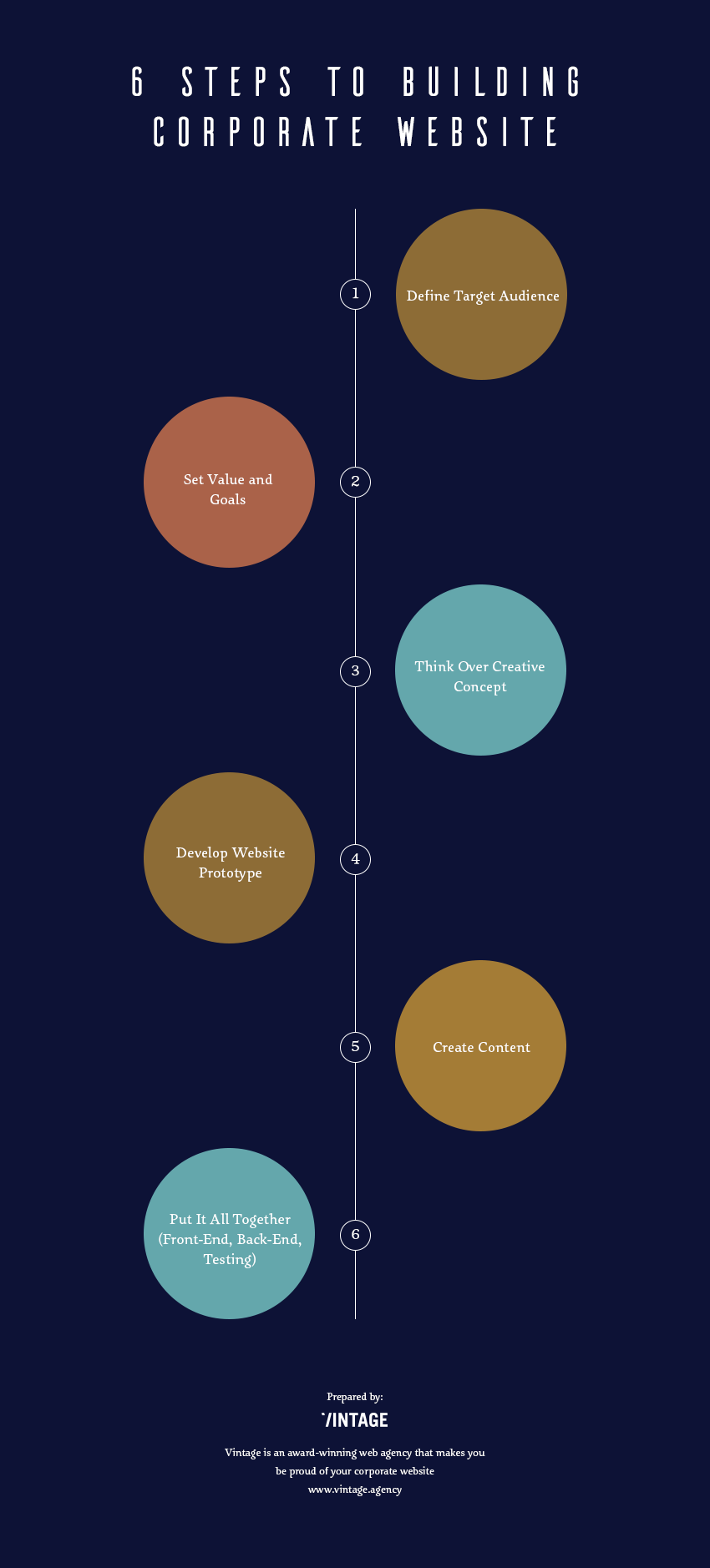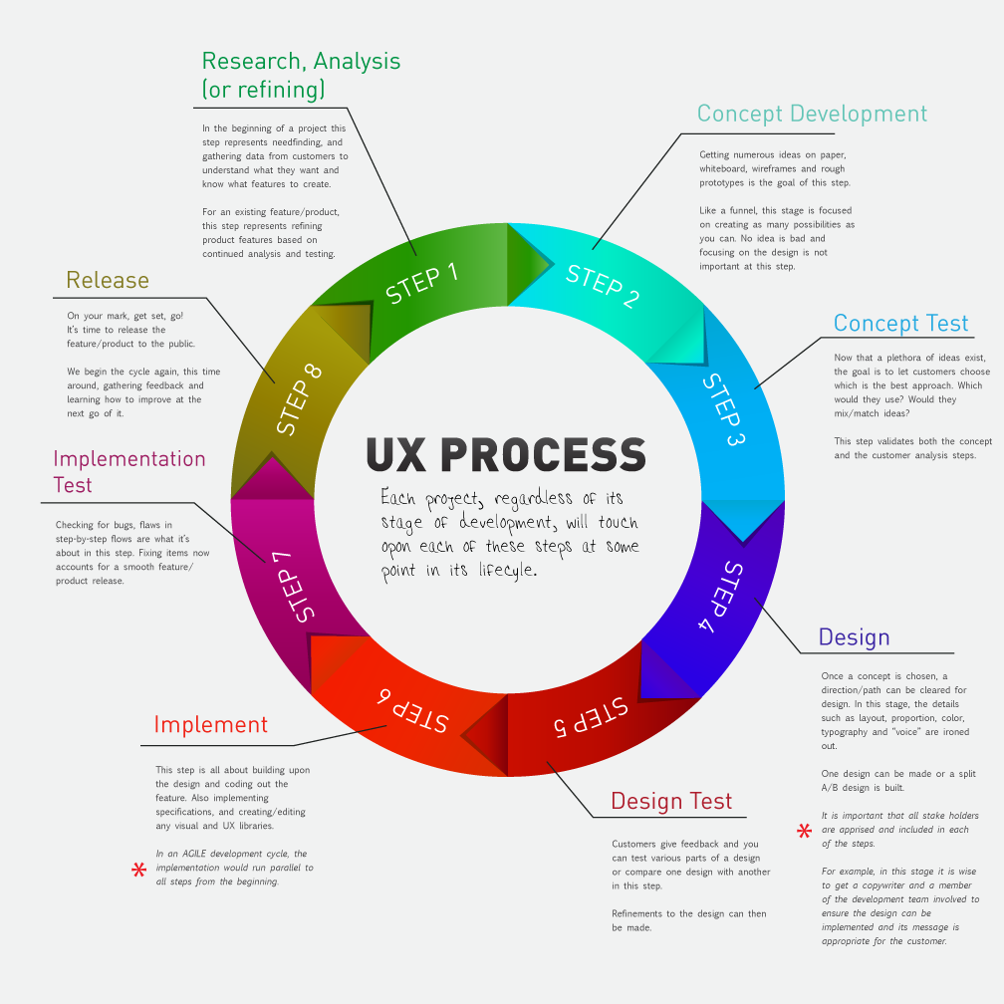Corporate websites are no longer the same
In 2013, Coca-Cola made a quite provocative statement: the corporate website is dead. What did they mean?
There has long been an expectation that a good corporate website had to be the definitive source of information about a company and the first place for people to find out about it. Some still think so. But the today’s web dramatically differs from it was a decade ago. It turned to be mobile, socially and emotionally driven.
There are some changes driving this paradigm shift toward totally new corporate websites. Websites of the 21st century provide more value to users. They are more like editorials and social media. They are focused on top of mind awareness. And, finally, they are becoming more personable.
And as the rules of the game have changed, all members of this game must adapt. Or die. So it seems to be the time to review the goals of your corporate website, either existed or planned one.
Ask yourself why you need a corporate website
The corporate website is a broad category of websites. However, they all have a similar goal: to promote a brand rather than to focus on products and sub-brands it offers. It is like a company’s personal assistant or business development executive that a company owner hires to work 24/7 without days off.
Steve Jobs always asked “Why?” He challenged every single operation not just within his company but also within his own life. That is what made him the greatest mind. Actually not only this but still.
Virginia M. Rometty, IBM’s chief executive, said design thinking to be the center of IBM’s corporate strategy. To succeed, companies need to look beyond the things they offer and address the entirety of their relationships with their customers. That is the cornerstone of any top corporate website.
There is a boatload of reasons to build a corporate website, but you have to figure out what is the point in it exactly for your business. Answers kind of “because every company should have one” are not going to work - come up with something better. The gist is simply common sense: you are making something for a specific purpose, so it has to fulfill that purpose through a corporate website design. Do not expect to get any ready answers from this article. Instead, prepare yourself to learn how to ask right questions - they are the key to success.
So, take a break and think carefully on why you need a website. Think broadly: people’s trust is the biggest asset of any company, institution, organization. Is your primary goal to increase the value of your brand? Do you need to convey a brand image? Or do you need to raise funds? To generate leads? After you wrote down all your thoughts, you can come to the next stage.
Once you answered the question “Why?,” the next logic question supposes to be “How?” I am going to help you with that. Here is a step-by-step guide I’ve compound to make the sophisticated process of creating a corporate website a bit more comprehensive.

Define your target audience
One of the very first questions we at Vintage ask our clients is “For whom do you want to create your website?” And we are regularly shocked at the length of the reply - a looong detailed list of diverse people. Naturally, our next question is “Which of those many are the most important?” Unfortunately, the answer is oftentimes that they are all equally important.
If your primary aim is to inform shareholders and partners about your financial achievements, your website should speak their language that will likely to be not pretty appreciated by your clients. In other words, the "Investments" page should be written in a more formal language to fulfill visitors expectations, but that doesn't mean that the content and its representation should be boring. If the main audience of your website is press and mass media, the content will differ. A team page will show that the company appreciates and rewards their hard work and useful initiatives. The staff will probably look for information about company’s latest news and different employee benefits.
Thus, a content and design of your future corporate website will be based on the target audience’s needs. So it is crucially important to understand who you want to visit your website and give them exactly what they look for.
Does that mean you should ignore all others? Not really. Your website should be accessible to everyone but be primarily aimed at a specific audience or audiences. Do not get me wrong - you do not need to choose between and narrow your audience to just a single group. I simply mean that you should prioritize.
So decide for whom you build your corporate website. Divide them into 3-4-5 groups and rank them in order of importance before creating a corporate website. This will help you to determine what content each group requires.

Understand the value of your website
Thanks to corporate websites, clients can save time and find a unique source for information about a company and its products and services. Investors benefit from finding all necessary information verifying that a company is worth investing in a company. Media attract readers by posting valuable and interesting news about your company they get from your website. Finally, you benefit from new purchases, investments, and media coverages.
The most successful brands became so because they caught on to the fact that their customers do not really care about the companies running their businesses. Those brands focusing on the needs of clients and strive to provide adds value to their lives are seeing customer loyalty and engagement improve.
Unfortunately, many brands, including the biggest ones, still provide no value to consumers. Instead, corporate websites mainly exist to represent the companies in web and had little to offer anyone beyond shareholders, investors, and PR. In could be said: it no longer works. Again, a corporate website is a tool which can offer maximum benefits for different target groups. It creates a transparent, intelligible dialogue with users, not a monolog.
Ask yourself whether your vision of what users want to find on your website differs from what you want them to see. By being obsessed with brand promotion, you give a limited view that is meaningless to the rest of your audience: clients will turn to social media or review sites, and potential customers will find necessary information on Glassdoor.

Concepting
So you have established the purpose of your future corporate website, identified your audience, and set goals. Now, it is time to find a way to achieve them. Here a web agency comes into play. Hire a designer and go through this part with him/her. Read this article to understand how to find a like-minded web designer.
Defining goals and problems a website has to solve is part of the design-thinking method. To some degree, the new design thinking movement reflects a modern, industrial era. Uber Brand is an example of a good-looking and minimalistic corporate website. The story of how the company’s founder and CEO, Travis Kalanick, and his design team came to a new brand image is about more than a corporate rebranding. It is about their attempt to change the company’s goal and create a new reputation. It is about transformation not only how it is perceived throughout the world, but how it perceives itself.
Creative concept of your corporate website design should be based on your corporate strategy and goals. Obviously, right? Before starting, you already need to have a concept of what you are going to create. If there is no concept, no story behind a design, then it is not graphic design.
Here is a few sources/articles with examples of the best corporate websites for inspiration:
- Awwwards Design Competition
- Top 10 Luxury Hotel Websites
- Top 10 Best B2B Websites
- Top 12 Restaurant Websites
- Top 10 Real Estate, Property & Rental Websites
- Top 12 Small Business Websites
- Top 10 Interior Design & Architecture Websites

Wireframing and Prototyping
Oleg Karapuzov, Lead UX Designer at Vintage and Prjctr design school curator, knows how to speak simply about complex things. For this article, he shared his knowledge and gave some useful tips on how to create a corporate website that people will love to use.

Website wireframing and prototyping is an essential part of creating the best product possible. It is a chance to experiment with ideas and turn them into something tangible.
First, make your notes after answering following questions:
- What message do you want to transmit to each target group?
- Which actions will users commit?
- What information will they look for?
- What is the function of your website?
Then, come to wireframing. Wireframe is a low fidelity layout. There are 3 main goals of web design: to present the main information group, to outline of structure and layout, and to describe the user interface.
It is the first and the roughest picture of your website.Most professional designers draw a sketch manually before using any software. Furthermore, before drawing, they use a worded description. So they can see which elements should be added, replaced, changed, or excluded. This method helps systematize the information and could be applied to any kind of projects.
If everything looks good and every next step is less or more obvious, it is time to draw paper prototype. It is a more serious and mobile version which allows testing an interface on real users. You could see what will happen after a certain button is pressed and how the screen changes. The paper prototyping is simple, free, entertaining, and extremely efficient.
Use stickers to draw sketches of each screen, widget, and button. And do not forget about a mobile version of your future corporate website. To have a better understanding about the website prototyping, read this article.
Show a few customers a paper version and let them choose the most effective way to engage with the website. Change the states of the prototype if necessary. A good Information Architecture for websites helps users to understand their surroundings and find what they are looking for.
Yes, this step is crucial, but do not be a perfectionism. In most cases, paper prototyping doesn’t need to be a 100% perfect. If it is good enough to give everyone a common understanding, the goal is achieved, and the work is done. I also recommend you to focus the most on the functionality that will be used most of the time.
Content (texts, visuals) Now, when you have a vision of how your website will look like in details, you can come to content production.
A content is as important as design - it keeps users on your website. What you put on it depends on what your target user wants to finds. If you build a corporate website primarily for shareholders and investors, it makes sense to compound an information in a clear, formal way. In their turn, PR and media will definitely look for basic facts about your company, financial reports, discover the company’s own spin on events, and download images to use as illustrations.
Again, apply here a Steve Job’s method. Find out what the top priority for your customers is when they visit your website. If the answer seems to so clear, it makes sense to conduct a survey.
Christine Crandell, Forbes contributor, thinks that rather than boring people to death, there is a clear opportunity to abandon the dull corporate website. Instead, she advises to create an interactive source that will generate conversation. At the beginning of the article, I’ve mentioned Coca Cola’s statement. It is not all - along with declaring the death of corporate website, the company proclaimed a reign of a content. They replaced a traditional corporate website with something that looked more like an online news channel.
No matter what you choose - corporate website in its usual form, corporate blog, or something else - a corporate website content has to be as useful and straightforward as possible. Avoid stuffing your website with copy that nobody will read and photo that nobody will see. Steve Krug in his book Don’t Make Me Think advises to put off half of the words on each page, and then do the same again. Thus you will reduce the noise level and give the useful content to be read.

Designing (Front-End, Back-End, animation, filling with content, designer’s expertise, testing)
After you have submitted the blueprint and content, the next step is designing and developing.
The design stage works towards a suitable look and feel of your website. Using the data you’ve gathered so far, you now need to decide how a website will look like. Transmit your vision and goals of your business website to your web designer and let him/her decide how to achieve this. Again, keep the audience in mind when planning on a visual part.
First, designers usually create main page design and test it. Your business’ visual branding elements should be included there. A logo, branding fonts, and color scheme, if you already have so, will dictate the design of your website.This is the foundation of the next stage.
Business website development governs all the code that makes the website tick. It can be split into two - front-end and back-end. A front-end developer is responsible for a website’s user-facing code and the architecture of its immersive user experience. A back-end developer takes finished front-end code and gives it working functionality. Once this part of work is done, it is time to put in content, get designer’s expertise, test the website on variety devices, and, finally, launch it.
Do you think it is time to relax? Not half. A good website is not a one-time event. So be ready to maintain it in a full-time basis.
As you see, the process of creating a top-notch corporate website is a lot of work. But with the right web agency and good planning, your website will inevitably become a star player in your industry. Our team at Vintage is eager to turn this challenge into a pleasant, understandable, and well-organized process.

View Comments